Explore Phu Quoc - South Vietnam Travel, Asia
Phu Quoc, Vietnam's largest island, is a hidden gem in the Gulf of Thailand. Known for its stunning beaches, lush jungles, and vibrant marine life, Phu Quoc is rapidly becoming a must-visit destination for travelers seeking both adventure and relaxation. This tropical paradise offers something for everyone, from sun-kissed shores to bustling night markets and historical landmarks. With its warm climate, friendly locals, and diverse activities, this island promises an unforgettable experience.
Check out all of our tours in Vietnam here.
Population: Approximately 180,000 in 2020.
Economy: The best place to produce the most delicious fish sauce in Vietnam and a gem of Vietnam’s tourism.
Landmarks: Famous for Phu Quoc National Park, Hon Thom Island, and Ham Ninh Fishing Village.
Vietnam
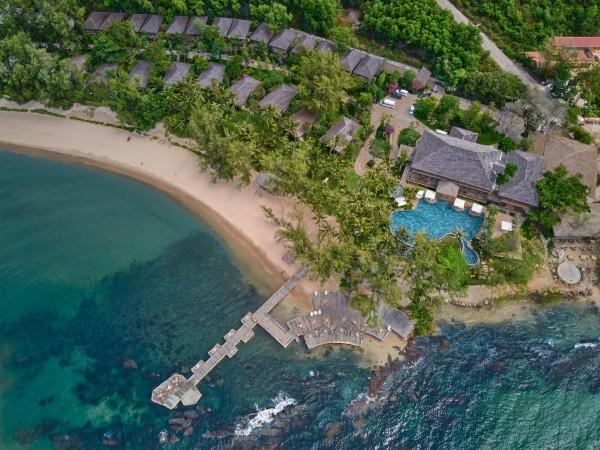
Overview of Phu Quoc
History & Cultural Influence
Phu Quoc's history is as rich as its landscapes. The island has seen influences from various cultures over the centuries, including Vietnamese, Khmer, and French colonialism. Its strategic location made it a significant point of interest during various historical periods. The Phu Quoc Prison, previously called the Coconut Tree Prison, is one of the most important historical landmarks on the island. This site offers a poignant look into Vietnam's past, particularly during the Vietnam War. Additionally, the island is home to several ancient fishing villages, where traditions and cultural practices have been preserved over generations.
Interaction with The Locals
Vietnam's largest island, Phu Quoc has a population of around 180,000 people. The island's citizens are predominantly Vietnamese, with a mix of ethnic Khmer and Chinese communities. Known for their warm hospitality, the locals are engaged in various occupations, including fishing, agriculture, and tourism-related services. The island's growing tourism industry has led to an increasing diversity in the population, with new residents from different parts of Vietnam and beyond contributing to its vibrant culture.
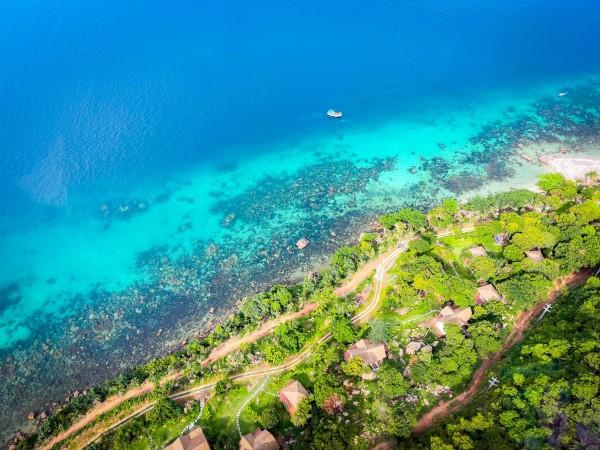
Phu Quoc's natual beauty - © Khiem Antony
Top Attractions in Phu Quoc
- Phu Quoc National Park: A UNESCO Biosphere Reserve, Phu Quoc National Park covers nearly half of the island. It's a haven for nature enthusiasts, offering hiking trails, diverse wildlife, and breathtaking viewpoints. The park's lush forests and pristine waters make it a perfect spot for eco-tourism.
- Vinpearl Safari & VinWonders: Families and thrill-seekers will find plenty of fun at Vinpearl Safari and VinWonders. Vinpearl Safari is Vietnam's first and only open zoo, home to a variety of exotic animals. VinWonders, on the other hand, is an amusement park with thrilling rides, water slides, and cultural shows.
- Bai Sao Beach & Bai Dai Beach: Phu Quoc is famous for its beautiful beaches, and Bai Sao Beach and Bai Dai Beach are among the most popular. Bai Sao Beach is a great place to unwind because of its turquoise seas and fine white sand. Bai Dai Beach, one of the longest beaches in Vietnam, offers a more secluded experience and is ideal for water sports.
- Hon Thom Island & Cable Car: Hon Thom Island, also known as Pineapple Island, is a must-visit for its stunning beaches and crystal-clear waters. The Hon Thom Cable Car, the longest oversea cable car in the world, offers breathtaking views of the surrounding islands and the sea. Once on the island, visitors can enjoy water sports, snorkeling, and exploring the Sun World Hon Thom Nature Park.
- Suoi Tranh Waterfall: Suoi Tranh Waterfall is a serene spot located within a lush tropical forest. The area is ideal for picnics, hiking, and taking a refreshing dip in the natural pools. It's a favored location for nature lovers because of the peaceful surroundings and breathtaking scenery.
- Ham Ninh Fishing Village: A look into the day-to-day activities of the local fisherman may be had in Ham Ninh, a traditional Vietnam’s fishing hamlet. The village is famous for its fresh seafood, particularly crabs and squid. Visitors can enjoy a meal at one of the many seaside restaurants while watching the sunset over the ocean.
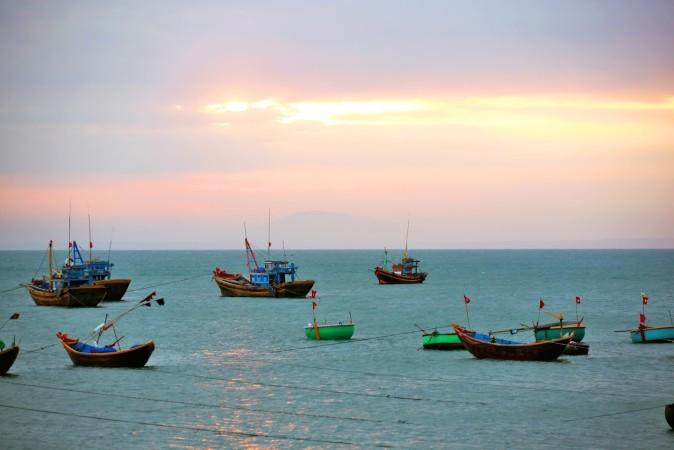
Ham Ninh Fishing Village - © Vietjet Air
Must-Try Dishes in Phu Quoc
Phu Quoc is a culinary haven, offering a diverse range of dishes that reflect the island's rich cultural heritage and abundant seafood. The local cuisine is known for its fresh ingredients and unique flavors, often featuring the island's famous fish sauce.
Goi Ca Trich (Herring Salad)
A signature dish of Phu Quoc, Goi Ca Trich is a refreshing salad made with fresh herring, herbs, vegetables, and a tangy dressing. The fish is lightly marinated in lime juice, which cooks it slightly, and is served with rice paper and a variety of herbs for wrapping. The dish is often accompanied by a dipping sauce made from Phu Quoc's renowned fish sauce, adding a savory depth of flavor.
Bun Quay Phu Quoc
Bun Quay is a unique noodle dish that you can only find in Phu Quoc. It features fresh seafood such as shrimp and squid, which are ground into a paste and then added to a bowl of rice noodles. The dish is served with a special dipping sauce made from fish sauce, green chili, and lime. What makes Bun Quay special is that diners can customize their bowl with fresh herbs, lime, and chili to their taste.
Ca Song Nuong (Grilled Mackerel)
Grilled mackerel is a popular dish in Phu Quoc, known for its simple yet delicious preparation. The fish is marinated with lemongrass, garlic, and chili, then grilled over an open flame. The result is a crispy, flavorful dish that's often served with rice and fresh vegetables.
Banh Canh Cha Ca (Thick Noodle Soup with Fish Cake)
This hearty noodle soup features thick, chewy noodles made from tapioca flour, served in a flavorful broth with fish cakes. The fish cakes are made from fresh fish, often mackerel, and are seasoned with spices before being fried. The soup is garnished with herbs, lime, and chili, offering a comforting and satisfying meal.
Hau Nuong Mo Hanh (Scallion Oil Grilled Oysters)
Phu Quoc's proximity to the sea ensures that seafood is always fresh. Grilled oysters with scallion oil is a must-try dish, featuring oysters grilled over hot coals and topped with scallion oil, peanuts, and a sprinkle of crispy fried onions. This dish is often enjoyed with a squeeze of lime and a dash of chili sauce.
Phu Quoc cuisine represents the distinctive features of southern Vietnam. Check out more delicious dishes in the South in our article here.
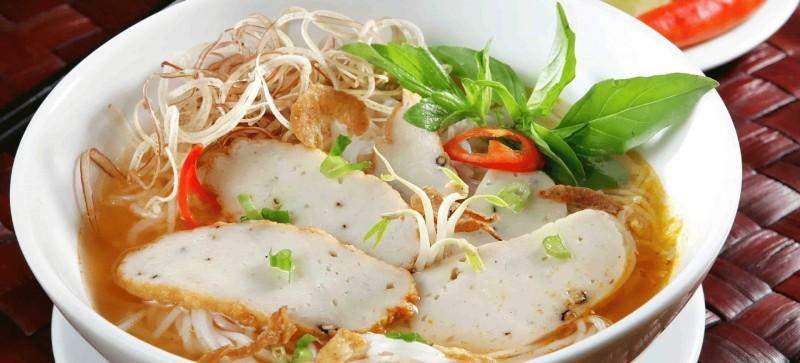
Banh Canh Cha Ca - © Foody
Festivals & Local Celebrations
Phu Quoc is home to a variety of festivals and local celebrations that showcase the island's rich cultural traditions. These events offer visitors a unique opportunity to experience the local way of life and participate in traditional activities.
Dinh Cau Night Market Festival
A vibrant festival, the Dinh Cau Night Market Festival takes place at the Dinh Cau Night Market. The festival features a range of activities, including traditional music and dance performances, culinary demonstrations, and craft stalls. Visitors can enjoy a variety of local delicacies, shop for souvenirs, and immerse themselves in the vibrant atmosphere.
Phu Quoc Fish Sauce Festival
As the island is renowned for its fish sauce, the Phu Quoc Fish Sauce Festival is a significant event that celebrates this iconic product. The festival includes tastings, cooking demonstrations, and tours of fish sauce factories. Visitors can learn about the traditional methods used to produce fish sauce and sample different varieties.
Whale Worshiping Festival (Cau Ngu Festival)
The Whale Worshiping Festival, also known as the Cau Ngu Festival, is an important cultural event for the local fishing communities. The festival is held to honor the whale, considered a sacred animal that protects fishermen at sea. The celebration includes rituals, prayers, and offerings, as well as traditional boat races and folk games.
Tet Holiday (Lunar New Year)
Like the rest of Vietnam, Phu Quoc celebrates Tet Holiday, the Lunar New Year. This major holiday is marked by family gatherings, special meals, and various cultural activities. Visitors during this time can witness traditional customs, such as dragon and lion dances, and enjoy festive markets and fireworks.
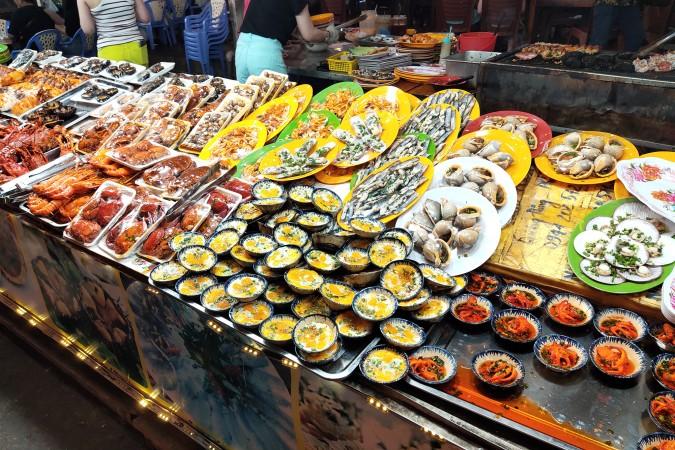
Food Tour during Dinh Cau Night Market Festival - © Vietnam Tourism
What to Do in Phu Quoc
Phu Quoc offers a plethora of activities for tourists, catering to a wide range of interests. From adventure sports to leisurely pursuits, there's something for everyone.
Snorkeling & Diving in Phu Quoc
The waters around Phu Quoc are teeming with marine life, making it a paradise for snorkeling and diving enthusiasts. Popular spots include the An Thoi Archipelago and Turtle Island, where visitors can explore vibrant coral reefs and encounter diverse sea creatures. Equipment rentals and guided tours are provided by a number of diving shops and tour companies.
Island Hopping Tours
Island hopping is a popular activity in Phu Quoc, with numerous tours available to explore the surrounding islands. These tours often include visits to Hon Thom, Hon Mong Tay, and Hon May Rut, each offering pristine beaches and crystal-clear waters. Many tours also offer opportunities for snorkeling, swimming, and fishing.
Adventure Activities
For those seeking adventure, Phu Quoc offers activities like trekking, kayaking, and zip-lining. The island's varied topography, which includes rivers, woods, and mountains, makes for the ideal setting for outdoor activities. Trekking through the national park, kayaking in the Cua Can River, or zip-lining through the forest canopy are just a few of the thrilling options available.
Relaxation & Wellness Retreat
Phu Quoc is also an ideal destination for relaxation and wellness. Many resorts and spas offer a range of treatments, from traditional Vietnamese massages to modern wellness therapies. Yoga and meditation classes are also available, providing a tranquil setting to unwind and rejuvenate.

Snorkeling in Phu Quoc - © Hon Thom Natural Park
Shopping in Phu Quoc
Phu Quoc offers a diverse shopping experience, from bustling local markets to specialty shops. Products available to visitors include gourmet cuisine, handcrafted goods from the area, and distinctive keepsakes.
Local Markets
The Dinh Cau Night Market is a must-visit for anyone looking to experience the local culture and cuisine. The market is bustling with vendors selling everything from fresh seafood and street food to clothing and souvenirs. Another popular market is the Duong Dong Market, known for its fresh produce, seafood, and local specialties.
Unique Souvenirs
Phu Quoc is famous for its pepper, pearls, and fish sauce, all of which make excellent souvenirs. Pearl farms on the island produce high-quality pearls, available in a variety of jewelry designs. Phu Quoc fish sauce, renowned for its rich flavor, is another popular item to bring home.
Handicrafts & Art
For those interested in local crafts, Phu Quoc offers a variety of handmade products, including ceramics, textiles, and wood carvings. Shops and markets often feature these crafts, providing visitors with a chance to purchase one-of-a-kind pieces.
Shopping Malls & Boutiques
In addition to traditional markets, Phu Quoc has several shopping malls and boutiques that offer a more modern shopping experience. These venues feature a mix of local and international brands, offering everything from fashion and accessories to electronics and home goods.
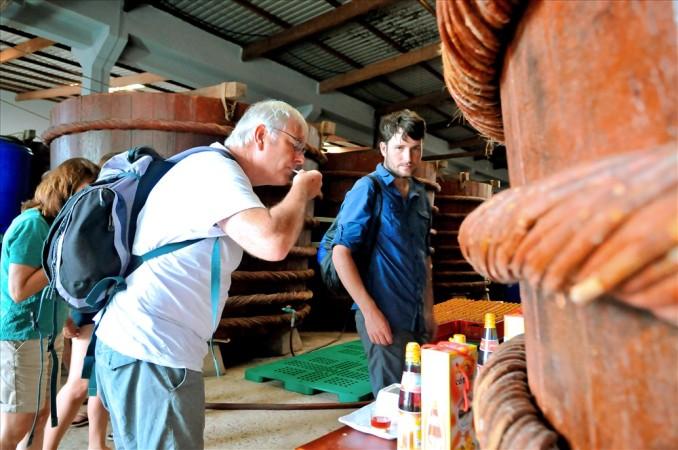
Taste test Phu Quoc fish sauce - © Bac Giang Official website
Weather in Phu Quoc: Best Time to Visit
Phu Quoc enjoys a tropical monsoon climate, characterized by warm temperatures throughout the year. The island experiences two main seasons—dry and rainy—which influence the flow of tourists and the activities available.
Dry Season in Phu Quoc
- Weather: The dry season in Phu Quoc is marked by sunny days, clear skies, and calm seas, with temperatures ranging from 25°C to 30°C (77°F to 86°F).
- Tourism Trend: This period is the peak tourism season, attracting visitors looking to enjoy beach activities, snorkeling, and island hopping. The pleasant weather makes it ideal for outdoor adventures like hiking in Phu Quoc National Park or exploring the island's cultural sites. Due to the influx of tourists, accommodation and travel costs tend to be higher, and it's advisable to book in advance.
The dry season is a good time to visit many cities in the south of Vietnam. Learn more about Vung Tau, a beautiful coastal city you can visit here.
Rainy Season in Phu Quoc
- Weather: The rainy season brings increased humidity, frequent showers, and occasional storms, with temperatures between 27°C and 32°C (81°F to 90°F).
- Tourism Trend: This period sees a dip in tourist numbers, offering a more serene experience. While some outdoor activities may be limited due to weather conditions, indoor activities are popular during this season. Travelers who visit during this time can take advantage of lower accommodation prices and fewer crowds, making it a great opportunity for those looking for a peaceful retreat.
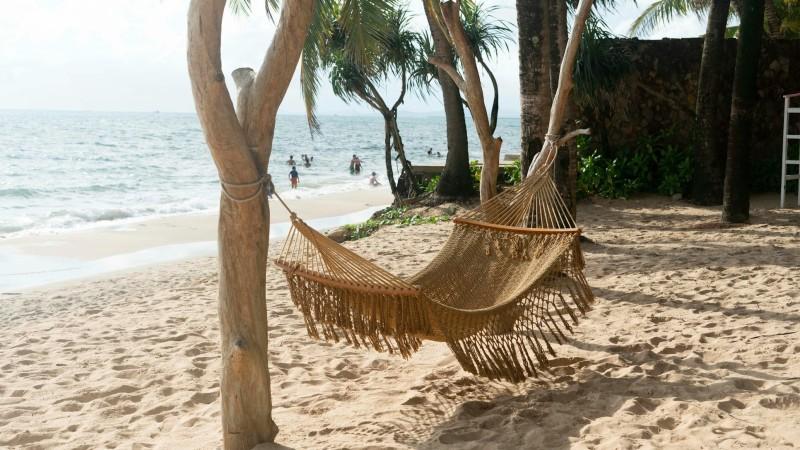
Dry season or Sunny season in Phu Quoc - © G3meaux UWU
Cultural Etiquette in Phu Quoc
Understanding and respecting local customs is an important part of visiting any destination. Phu Quoc, while modern and tourist-friendly, still retains many traditional customs that visitors should be aware of.
- Dress Code: While beachwear is appropriate on the beaches, visitors to rural regions, small towns, and religious places should dress modestly. Given the tropical temperature, clothing that is lightweight and breathable is advised.
- Greetings and Social Interactions: The Vietnamese greeting typically involves a smile and handshakes, especially in business or more formal interactions. It's polite to greet the oldest person first and to use both hands when giving or receiving something, such as a gift or business card.
- Tipping and Payment Etiquette: Tipping is not customary in Vietnam, but it's appreciated for exceptional service. A small tip in restaurants, for tour guides, or for hotel staff is a nice gesture. When making payments, it's customary to hand money directly to the person, using both hands.
- Environmental Awareness: Phu Quoc places great emphasis on protecting its natural environment. Visitors are encouraged to participate in conservation efforts by avoiding littering, reducing plastic use, and respecting wildlife. It's also important to be mindful of local marine life and coral reefs when engaging in water activities.

Eco-tourism is promoted in Phu Quoc - © VnExpress
Essential Travel Information
Getting Around Phu Quoc
Phu Quoc offers various transportation options to suit different travel needs:
- Motorbike Rentals: A popular and flexible way to explore the island. Motorbikes are affordable and provide easy access to attractions. An international driving license is required.
- Taxis and Car Rentals: Taxis are widely available and convenient for those who prefer not to drive. Car rentals offer flexibility, especially for families or groups, with options ranging from sedans to SUVs.
- Bicycle Rentals: Ideal for a leisurely, eco-friendly exploration of the island's scenery. Many accommodations offer bike rentals.
- Public Transportation: Public buses are a budget-friendly option but have limited routes and schedules.
- Boat Tours: Great for island hopping and water activities like snorkeling and fishing. Available as private charters or group tours.
ATM & Banking Services
Phu Quoc offers a range of banking and ATM facilities, making it easy for visitors to access cash and financial services. ATMs are widely available in tourist areas like Duong Dong town and Long Beach, and they accept most international cards for cash withdrawals in Vietnamese Dong (VND). Currency exchange services can be found at banks, hotels, and exchange counters, though it's advisable to use official locations for fair rates. While major currencies are generally accepted, carrying cash is recommended for small purchases and transactions in rural areas.
Where to Stay in Phu Quoc
Phu Quoc provides a diverse array of accommodation options catering to various budgets and preferences. Travelers can choose from luxury resorts offering world-class amenities and beachfront views, to mid-range hotels and guesthouses that balance comfort and affordability. Budget-friendly options like hostels are available for those looking to save on costs, often conveniently located near popular beaches and attractions. For a more private experience, villas and holiday rentals offer spacious accommodations ideal for families or groups, complete with kitchen facilities and private amenities.
Articles for you

Explore Yala National Park - Sri Lanka Travel, Asia
Tucked away in Sri Lanka’s southeastern corner, Yala National Park is where wild nature meets deep tradition. Known worldwide for its leopard population, the park is also home to elephants, sloth bears, crocodiles, and hundreds of bird species. Beyond wildlife, Yala opens doors to a cultural landscape dotted with ancient temples, Buddhist ruins, and coastal villages. For travelers seeking more than just a safari, Yala offers a chance to explore eco-tourism, local communities, and sacred heritage sites.
Population: The Yala National Park area doesn’t have a human population.
Economy: The economy around Yala National Park thrives on a blend of eco-tourism, agriculture, and local services. Safari tours, eco-lodges, and cultural experiences drive steady income for nearby towns like Tissamaharama and Kataragama, supporting thousands of families.
Landmarks: Famous for Block I of Yala and wildlife encounters, including elephants, sloth bears, crocodiles, and exotic bird species.

Explore Galle - Sri Lanka Travel, Asia
Nestled on Sri Lanka’s southern coastline, Galle is a vibrant city where history meets the sea. Its cobbled streets, colonial architecture, and serene beaches make it a must-visit destination for travelers seeking a blend of culture, adventure, and relaxation. A UNESCO World Heritage site, Galle captivates visitors with its Dutch Fort, bustling markets, and friendly locals. Whether you’re exploring the ramparts at sunset or savoring fresh seafood by the shore, Galle promises an unforgettable journey into Sri Lanka’s heritage.
Population: Approximately 113,000 in 2023.
Economy: Galle’s economy thrives on tourism, trade, and fisheries. The city’s historic fort, colonial architecture, and coastal charm draw thousands of international visitors each year, making tourism its main economic driver. Fishing remains vital for local livelihoods, supplying fresh seafood across the region.
Landmarks: Famous for the Galle Fort, Dutch Reformed Church & Maritime Museum, and Unawatuna Beach.

Explore Bentota - Sri Lanka Travel, Asia
Nestled along Sri Lanka’s southwestern coast, Bentota is a tropical paradise that blends golden beaches, vibrant culture, and thrilling adventures. Famous for its calm waters, luxury resorts, and scenic river estuary, Bentota has become a top destination for travelers seeking both relaxation and authentic experiences. From serene beach walks at sunrise to adrenaline-pumping water sports, this coastal town offers a perfect balance of leisure and exploration. With its proximity to Colombo and Galle, Bentota is easy to reach, making it an ideal stop for both short escapes and extended holidays.
Population: Approximately 37,000 in 2023.
Economy: Bentota’s economy thrives mainly on tourism, which drives local businesses such as hotels, restaurants, and wellness retreats. The town also benefits from fishing, coconut cultivation, and handicrafts like wood carving and batik textiles. Many residents rely on the growing demand for water sports and Ayurvedic treatments, making tourism the backbone of both income and employment in the area.
Landmarks: Famous for Bentota Beach, Bentota River Safari, and Kande Vihara Temple.

Explore Mirissa - Sri Lanka Travel, Asia
Mirissa is a charming coastal town on Sri Lanka’s southern shoreline. Known for its golden beaches, turquoise waters, and vibrant marine life, it has become a must-visit stop for travelers exploring the island. Many come for whale watching, surfing, and sunset views at Coconut Tree Hill, but Mirissa offers much more than postcard beauty. The fishing boats you see anchored by the bay carry generations of stories. Local traditions, delicious cuisine, and a laid-back rhythm of life shape every visitor’s experience.
Population: Approximately 4,700 in 2023.
Economy: Mirissa’s economy is largely shaped by its coastal location. Fishing has long been the backbone of local livelihoods, with generations relying on the Indian Ocean for income. In recent decades, tourism has become the main driver of growth, thanks to whale watching, surfing, and beachside hospitality.
Landmarks: Famous for Mirissa Beach, Coconut Tree Hill, and Parrot Rock Bridge.

Explore Nuwara Eliya - Sri Lanka Travel, Asia
Tucked away in the Central Highlands of Sri Lanka, Nuwara Eliya is often called “Little England”. With its rolling tea plantations, cool misty mornings, and colonial charm, this mountain town feels like a step into another world. Travelers come here to breathe fresh air, walk through flower gardens, sip the finest Ceylon Tea, and enjoy a pace of life far from the island’s busy cities. Whether you’re drawn by scenic landscapes, heritage architecture, or the warmth of its people, Nuwara Eliya is a destination that blends nature, culture, and history in perfect harmony.
Population: Approximately 781,000 in 2023.
Economy: Nuwara Eliya’s economy thrives mainly on tea production, as it sits in the heart of Sri Lanka’s central highlands, famous worldwide for Ceylon Tea. The city also benefits from a growing tourism industry, attracting visitors with its colonial charm, cool climate, and scenic landscapes.
Landmarks: Famous for Gregory Lake, Hakgala Botanical Garden, and Victoria Park.

Explore Sukau - Malaysia Travel, Asia
Nestled on the banks of the Kinabatangan River in Sabah, Malaysian Borneo, Sukau is a destination where wildlife, culture, and conservation come together. Known as one of Asia’s top spots for river safaris and eco-tourism, this quiet village offers a front-row seat to encounters with Bornean orangutans, pygmy elephants, proboscis monkeys, and exotic birdlife.
Population: Approximately 1,400 in 2019.
Economy: Sukau’s economy is shaped by its riverine location and natural resources. Traditionally, the Orang Sungai community relied on fishing, small-scale farming, and forest gathering for their livelihood. Today, the village has shifted toward eco-tourism, with river cruises, jungle trekking, and homestays providing income.
Landmarks: Famous for the Kinabatangan River cruises, Gomantong Caves, and Ox-bow lakes and wetlands.
